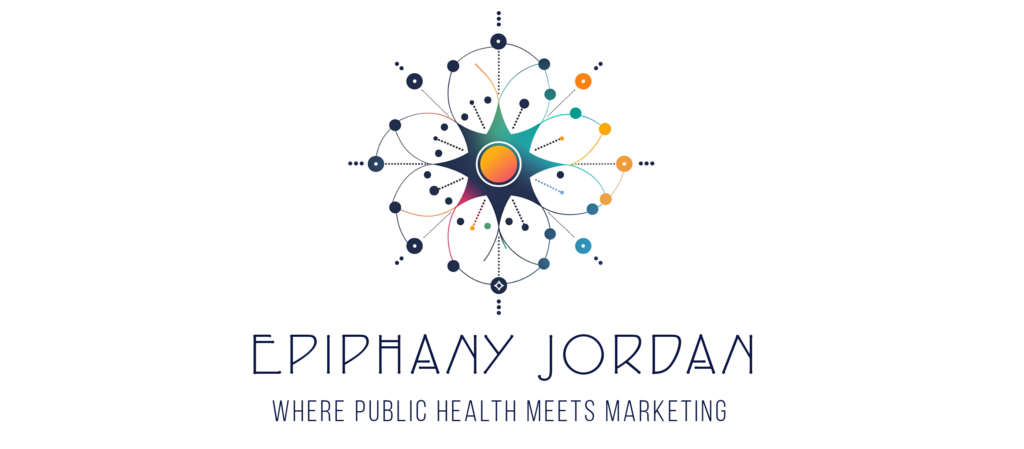We’ve never heard of social marketing. What is it?
Social marketing is a branch of public health that has been around since the 1970s, but is rarely utilized. It combines commercial marketing techniques with qualitative research to create behavioral interventions that appeal to the audience segment based on their specific needs and desires, and meets them where they live and work.
While many campaigns focus solely on health communications, social marketing creates a marketing plan that takes into consideration the 4 P’s: Price, Place, Product and Promotion. It can also involve audience personas, creative briefs, and ad testing to discover what resonates with the chosen audience.
More extensive social-marketing campaigns will include budgeting and project management, monitoring and evaluation, allowing organizations to measure their progress and meet goals for funding and data analysis.
Is social marketing the same as social media?
Social media is a subset of social marketing (file under: Promotion) that may be useful in reaching the intended audience, though it’s not a given. If the priority population gets its information from flyers on a church bulletin board instead of Instagram or Tik-Tok, putting messaging on social media might not be the best use of limited resources.
Why should we bring in an outside consultant?
Most people who work in public health or social services are devoted superheroes who juggle multiple projects with few resources. Because they spend so much time trying to get it all done, it’s hard to stand back and look at the bigger picture, or do a deep dive into an issue.
As someone who is outside of your organization, and the communities it serves, I bring a fresh, objective perspective to problem solving, and often unearth desires of the community that are very different from the messages social services, non-profits, or public health organizations tend to promote. I’m usually surprised, and humbled, as well, when I learn what people want and need, and what stops them from improving their health.
I also like to meet regularly with staff and management to take them through the process, so after I’m done with my project, you can look at your future projects with a social-marketing lens, and make different choices when it comes to meeting your organization’s goals.
The compelling reason to choose social marketing is pragmatic: the competition spends beaucoup bucks on acquiring and retaining customers, and they have no ethical dilemmas when it comes to profiting at the expense of your clients’ health. Doesn’t it make sense to use your resources to fight them effectively and efficiently, in the way they do?
The idea of marketing to the people we serve is distasteful. Why should we take this approach?
Oftentimes, when public health, non-profits, or social services try to get their stakeholders to make a change, they are driven to appeal to everyone in need of the intervention. Unfortunately, trying to serve everyone can lead to programs that reach no one.
Take cigarette smoking as an example. Somebody in their 50s who has been smoking for 30+ years is going to have different reasons for continuing to smoke, and wanting to quit, than somebody who is in their 20s. While both groups might have a desire to quit, they will have different barriers to quitting, unique messages that will appeal, and separate channels to reach them. By choosing an audience to focus on, we can understand what keeps them from quitting, tailor the campaign to their unique needs, and offer them the tools they will need to be successful.

The compelling reason to choose social marketing is pragmatic: the competition spends beaucoup bucks on acquiring and retaining customers, and they have no ethical dilemmas when it comes to profiting at the expense of your clients’ health. Doesn’t it make sense to use your resources to fight them effectively and efficiently, in the way they do?
Can you describe the process?
Social marketing follows a 10-step process as defined by Philip Lee and Nancy Kotler who wrote the book on social marketing. The first step is to choose a behavioral change for the population; oftentimes an organization already knows what behavioral change they want to focus on. From there, I put together background research on the issue and the organization, and develop a purpose statement for the project.
Next, I do a SWOT analysis (Strengths, Weaknesses, Opportunity and Threats) of your organization and how it’s approached the behavioral change in the past. I then research potential audience segments, and work with you and your staff to figure out which segment hits the sweet spot of level of impact and likelihood of adoption.
Once we have chosen the audience segment that we want to focus on, I’ll create goals for behavioral, knowledge and belief objectives. Next, we recruit participants from the audience segment for qualitative interviews. The data is then coded and analyzed in NVivo, a qualitative data analysis software, paying attention to benefits, barriers and competition that the behavioral change will address.
After writing a positioning statement that frames the behavioral intervention in a way that will resonate with the audience, I will create a marketing mix that outlines Produce, Price, Place and Promotion, and mock up ads to show the original participants to figure out what message and approach appeals to them.
If desired, a plan for implementation, budgeting and evaluation can be created as well, though this part of the process should be developed in collaboration with the existing budget, framework, and systems of the organizations.
How long does a social marketing project take?
Anywhere from 2-6 months, depending on your organization or institution’s internal requirements for approving recruitment materials for interview participants, research questions, test ads, etc.
I like to take on no more than two projects at a time so that I can immerse myself in the unique confluence of organizational culture, health issues, and population’s needs.
Do you have to be in my city or state to work on projects for us?
It is quite possible to do a social-marketing project online, though, depending on how the priority population is defined, a visit to the area might be helpful. I’m currently based in Reno, Nevada, giving me easy access to large cities and capitals of west-coast states. A visit of a day or two is probably enough to observe both an organization and its people.
What type of issues does social marketing work for?
In Asia and Africa, social-marketing efforts are often paired with products. For example, many campaigns have been orchestrated with national governments to offer discounted family planning products. In America and Canada, the focus has been on behavioral changes. Many issues have received the social-marketing treatment: smoking, drunk driving, food stamps, childhood obesity, mental health, breastfeeding, recycling, and pollution are a few examples.

In school, much of my research was on loneliness in the elderly, but other areas of interest for me are connection and relationships, reproductive and sexual health, addiction, psychedelic medicine, mental health, sleep, gender, literacy, body acceptance, homelessness, disability, child development, and climate change. Whenever possible, I try to create interventions that foster support and communication between individuals.
